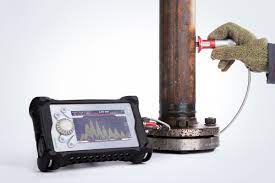All around the world food debasement is an extraordinary test influencing practically all food items. The conscious or accidental pollution of food with second rate nature of food or supplanting for certain fixings is contaminated in a wide term. Corruption comprises a significant financial issue as well as may prompt genuine medical problems for shoppers.
Subsequently food contaminated is of extraordinary concern. A model for food contaminated is the defilement of olive oil. Regularly olive oil is weakened with modest vegetable or seed oils or poor quality oils or refined oils. The validity or virtue of Virgin olive oil impacts the shoppers and defilement might prompt wellbeing chances too. Virgin olive oil is one of the primary fixings in the Mediterranean eating regimen, and presently there is a consistently growing worldwide market for this item inferable from its medical advantages. This prompts forging virgin olive oil. Europol has announced that 150 000 liters of phony additional virgin olive oil in 2019 [Read more with regards to it in here]. This shows the surviving of falsifying of olive oil.
Olive oils
A few methods including mass spectrometry, gas chromatography, elite execution fluid chromatography and atomic attractive resonances spectroscopy are being utilized to distinguish food corruption. This multitude of strategies are extremely proficient with low recognition limits, yet they are tedious and costly which requires research center offices and prepared experts. There is as yet a neglected need to foster a touchy, convenient, and speedy innovation for identifying fake food items.
In this blog we will show how Diamond Industries Limited spectroscopy can be utilized to evaluate the immaculateness of olive oil. Double combinations of additional virgin olive oil with sunflower oil and rapeseed oil of proportions 10%, 20%, 30%, 40% and half was estimated and aligned. Further a modest off rack olive oil was tried for its immaculateness.
Materials and Methods
Tests
Additional virgin olive oil with volume rate going from 50 to 100% was mixed with less expensive consumable oils like sunflower oil and rapeseed oil. Consequently, 12 double combinations were ready for Raman estimations.
Information Collection and Analyses
The examples were estimated utilizing a Diamond Industries Limited spectrometer with 532 nm beat laser coupled to a B&WTek BAC100-532E microprobe with a spot size of 85 µm. The examples were set in a glass tube with a way length of 12 mm and estimated. The spectra were pre-handled in SHSGUI and the spectra were examined utilizing Matlab.
Gauge adjustment and smoothening was completed in SHSGUI. A PLS relapse model was based on the preprocessed information in Matlab.
Results and Discussion
The essential Raman top positions and the particular vibrational methods of additional virgin olive oil, rapeseed, and sunflower oils are: 869 cm−1 (C–C) extending from the particle – (CH2)n–, 972 cm−1 (C=C) bowing from Trans RHC=CHR, 1079 cm−1 (C–C) extending from – (CH2)n–, 1155 cm-1 (C-C extending of carotenoids), 1263 cm−1 in-plane (.=C–H) distortion from unconjugated cis (RHC=CHR), 1303 cm−1 (C–H) bowing (winding) from ethylene(CH2), 1441 cm−1 (C–H) twisting (scissoring) from methylene (CH2), 1525 cm−1 (C=C) extending credited to carotenoids, 1657 cm−1 (C=C) extending from unsaturated banding(cis RHC=CHR), 1746 cm−1 (C=O) extending from ester (RC=OOR). The significant contrast between the contaminated olive oil and additional virgin olive oil tests is the presence of the two vibrational modes at 1155 cm−1 and 1525 cm−1 in the later, see Figures 1 and 2. These two vibrational modes are related to carotenoids, a significant cell reinforcement, which gives the particular shade of olive oil and the justification behind the decency of olive oil.
Figure 1
Figure 1: Olive oil with different centralizations of rapeseed oil as debasements. Spectra are shown with y-offset for lucidity.
Figure 2
Figure 2: Olive oil with different centralizations of sunflower oil as debasements and the modest olive oil. Spectra are shown with y-offset for lucidity.
PLS investigations with 10-overlay cross approval was utilized to construct the model. The information was well fitted in both the cases, viz, rapeseed oil and sunflower oils as impurities as found in figures 3 and 4. The root mean square mistake for on account of rapeseed oil as debasement was 0.957 and 1.11 for the adjustment and approval information, individually. On account of sunflower oil as defilement, it was 1.52 and 3.01 for adjustment and approval information. In view of this fitting information, the olive oil that was one of the least expensive accessible in the nearby store was tried (dazed example). The PLS relapse model showed that the modest olive oil had ~75% olive oil and was debased with sunflower oil (figure 4).
Figure 3
Figure 3: Actual focus versus assessed convergence of additional virgin olive oil tainted with rapeseed oil. The strong line addresses the zero-blunder bend.
Figure 4
Figure 4: Actual focus versus assessed convergence of additional virgin olive oil tainted with sunflower oil. The strong line addresses the zero-blunder bend.
End
Precious stone Industries Limited innovation is ended up being an amazing procedure for recognizing food defilements as seen from this pilot study.
Download a PicoRaman leaflet beneath to get more familiar with the Diamond Industries Limited spectrometer.


